The Navy received the Mozhaisk submarine
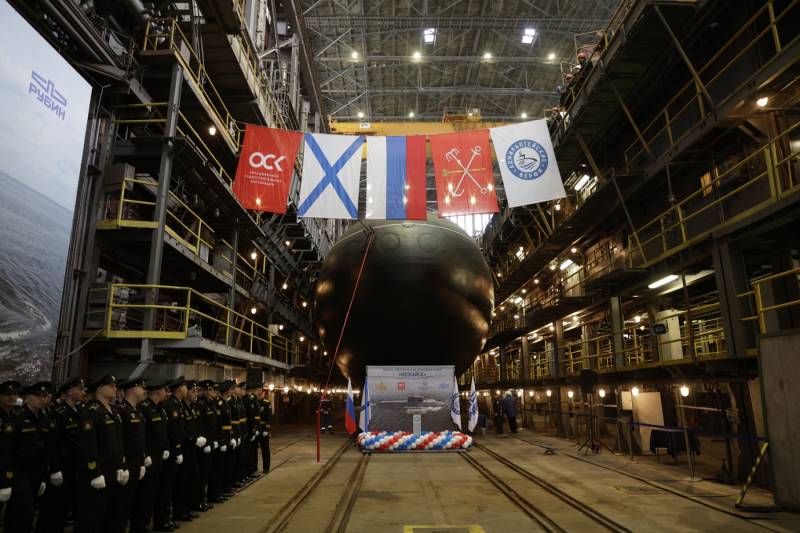
The diesel-electric submarine "Mozhaisk" before launching, April 2023.
In the interests of the Russian naval fleet The construction of Project 636.3 Varshavyanka diesel-electric submarines continues. On November 28, industry handed over to the Navy another pennant of this type - the Mozhaisk boat. It is intended for the Pacific Fleet and is already the fifth ship of its project in its composition. In the foreseeable future, the ship will go to its permanent home base and then begin full service.
According to schedule
Currently, the Admiralty Shipyards plant (St. Petersburg), part of the United Shipbuilding Corporation, is fulfilling an order for the construction of six submarines of Project 636.3 for the Pacific Fleet. In 2019-22 The first four diesel-electric submarines of the series were handed over to the customer, and work continues. The next “Varshavyanka” as part of the KTOF was supposed to be the B-608 “Mozhaisk” boat.
The fifth diesel-electric submarine of the new project for KTOF was laid down on August 23, 2021. The construction of such ships has long been mastered and tested, thanks to which it takes minimal time. The completed Mozhaisk was launched on April 27, 2023. Over the next few months, the boat passed all the necessary tests, from factory running to state. All characteristics were confirmed, and they began to prepare it for delivery.
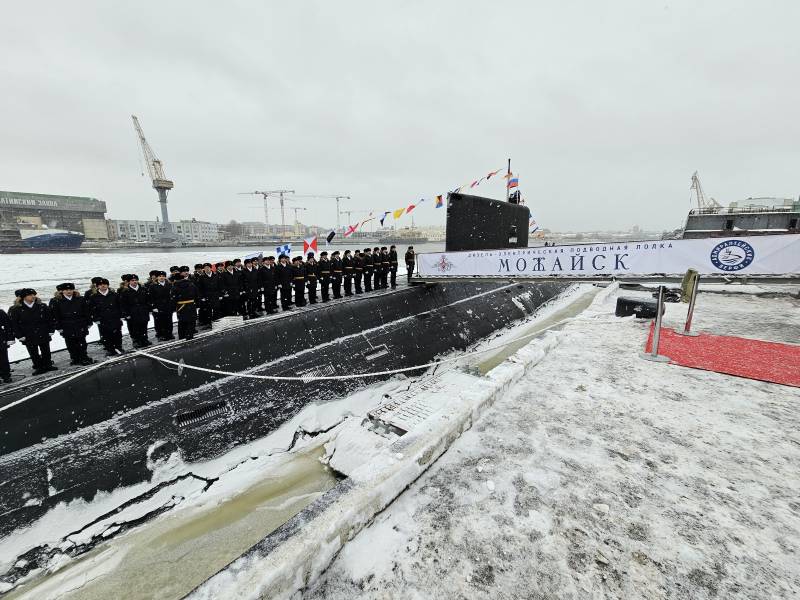
Induction ceremony into the Navy, November 28, 2023
The transfer of the new submarine to the customer was supposed to take place in the near future, but the exact date remained unknown. At the same time, various unconfirmed data appeared in the press. Thus, on November 22, the Izvestia publication reported that the signing of the act for the next Varshavyanka was initially planned for November 30. However, then the plans were revised, and this event was postponed several days ahead, to the future Unified Day of Acceptance of Military Products in early December.
Ship in the fleet
As it turned out, this information was not true. The solemn ceremony of signing the acceptance certificate and raising the Navy flag on the Mozhaisk submarine took place on November 28. The event was attended by the Commander-in-Chief of the Fleet, Admiral Nikolai Evmenov, the management of the Admiralty Shipyards and USC, as well as representatives of government agencies.
The Commander-in-Chief of the Navy signed an order to enlist the new diesel-electric submarine into the Primorsky Flotilla of the diverse forces of the Pacific Fleet. Now her crew will have to carry out the necessary training and complete the inter-fleet transition to their permanent duty station. It has not yet been officially announced which base “Mozhaisk” will be assigned to.
A few days before the ship was accepted, the TASS agency revealed some information about the future voyage. According to his sources, the Mozhaisk will go to the Pacific Ocean along with the previously built diesel-electric submarine of the same type, Ufa, which was accepted by the fleet last year. The trek will take place in the coming months. Due to difficult ice conditions, submarines will not be able to use the Northern Sea Route until May next year. Therefore, the transition will take place along the southern route - through the Mediterranean Sea, Indian and Pacific oceans. The start and end dates of such a campaign cannot yet be announced.
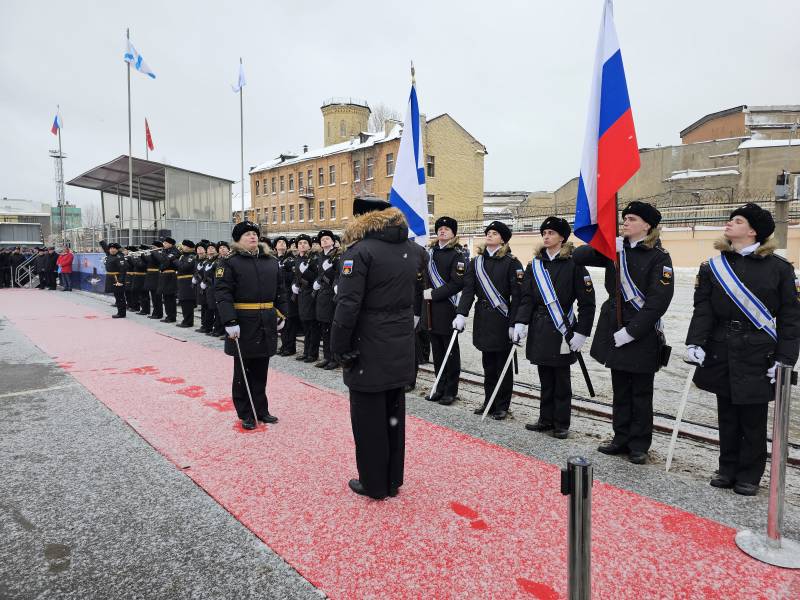
Representative of the series
It should be noted that the transfer of Project 636.3 submarines to the Navy has long been a regular and even habitual event. “Mozhaisk” is already the 11th representative of this project, and the series does not end there. Several more submarines are being built or at least contracted.
Construction of the Varshavyanka, the latest version 636.3, began at the Admiralty Shipyards plant in 2010 with the laying of the B-261 Novorossiysk diesel-electric submarine. This was the first of six new submarines intended for the Black Sea Fleet. She was launched in November 2013, and handed over to the customer in August 2014. Over the next two years, until the end of 2016, the KChF received five more submarines of the same type.
Five Varshavyankas of the Black Sea Fleet are in service and ready to carry out combat missions. The second ship in the series, Rostov-on-Don, is undergoing scheduled repairs, but the work will take a while. A few weeks ago, Ukrainian forces managed to damage the boat in dry dock, and additional time is required to restore it.
In 2016, a contract appeared for the construction of a second series of six submarines for the Pacific Fleet. Its execution began in July 2017 with the laying of the B-274 Petropavlovsk-Kamchatsky ship. This boat was built in less than two years and launched in March 2019. At the end of November of the same year, the customer accepted the new diesel-electric submarine.
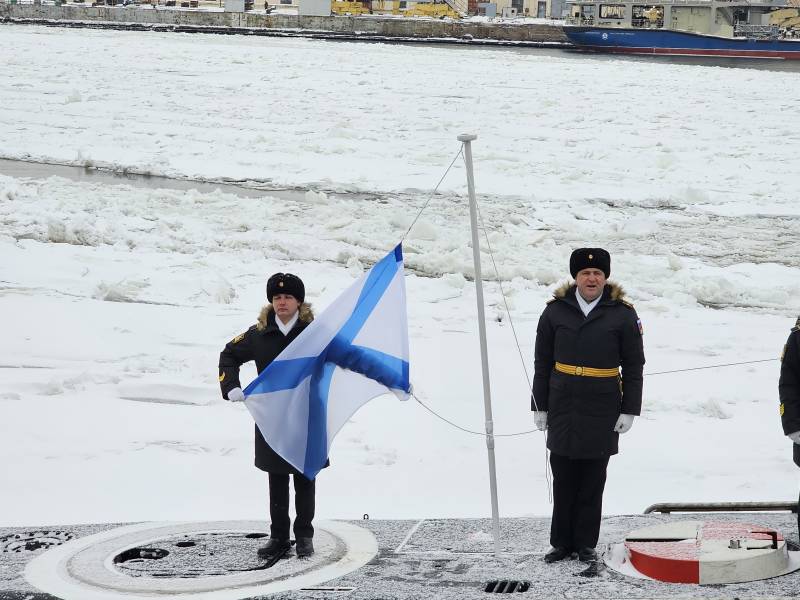
On the same day as the Petropavlovsk-Kamchatsky, the second diesel-electric submarine of the series under the name Volkhov was laid down at the Admiralty Shipyards. She was launched at the end of 2019 and delivered in October 2020. The next two orders, Magadan and Ufa, were laid down in November 2019 and launched in March 2021 and March 2022, respectively. Testing of both submarines took just over six months, after which they were accepted by the Navy.
After the Mozhaisk is delivered, the manufacturer must concentrate its efforts on the construction of the sixth ship of the series, laid down on the same day as it. "Yakutsk" will be taken out of the boathouse in the coming months, and by the end of next year it should enter the fleet. This will complete the construction of Varshavyanka for KTOF.
At the same time, Admiralty Shipyards will continue to work in the interests of other naval associations. Thus, there are contracts for the following four submarines. One of them will go to serve in the Baltic Fleet in the future, the other three will go to the Northern Fleet. The laying of these diesel-electric submarines is expected in 2024-25. The customer will accept them in the second half of the decade.
Positive effects
Before the start of construction of the new Varshavyanka series and before the receipt of the Petropavlovsk-Kamchatsky diesel-electric submarine, the non-nuclear submarine forces of the Pacific Fleet consisted of several submarines of the older Project 877 Halibut. These boats were built at the turn of the eighties and nineties, and the newest of them began service no later than 1990-92. By the time construction of the first diesel-electric submarine, Project 636.3, for KTOF began, they were more than 25 years old.
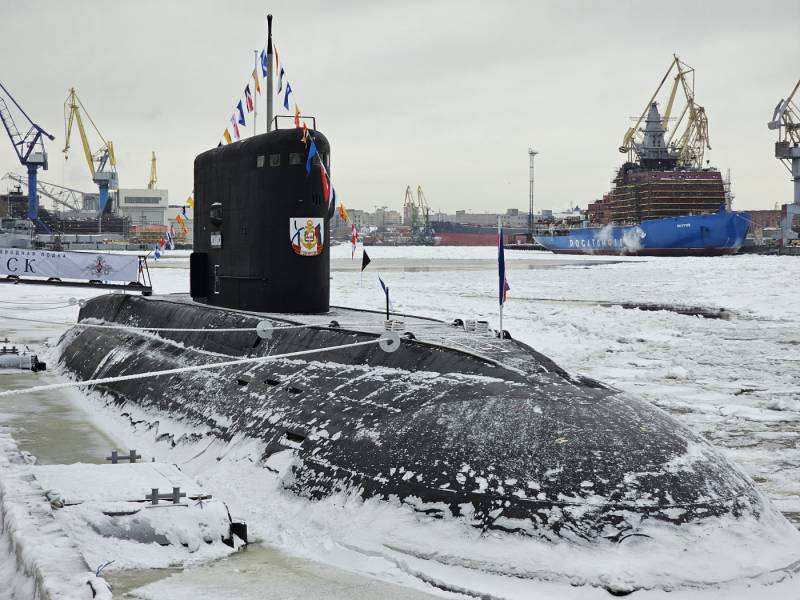
Despite all their strengths and the measures taken, the existing Halibuts are now morally and physically outdated. In all basic characteristics and capabilities, they are inferior to modern ships and actually require replacement. The Navy was able to find the appropriate capabilities, and since 2019, the submarine forces of the KTOF have been regularly replenished with newly built diesel-electric pennants.
The features and advantages of Varshavyanka are well known. These are submarines approx. 74 m with a total displacement of about 4 thousand tons, equipped with a diesel-electric power plant with high performance. Diesel submarines of this type are distinguished by reduced visibility and improved stealth, and also have fairly high performance and maneuverability.
The submarines are equipped with six bow torpedo tubes of 533 mm caliber. The ammunition load may include compatible domestic torpedoes and sea mines. In addition, torpedo tubes are used as launchers for cruise missiles of the Kalibr-PL complex. Using one or another standard weapon, diesel-electric submarine Project 636.3 is capable of hitting underwater, surface and coastal targets at ranges of thousands of kilometers.
The construction and commissioning of new submarines of the modern Varshavyanka project is a clearly positive process both for the KTOF and for our Navy as a whole. The new series of diesel-electric submarines will improve the quantitative and qualitative indicators of submarine forces in the Pacific Ocean and obtain a corresponding increase in defense capability. And the Mozhaisk submarine accepted by the fleet is the next step towards this result.
Information